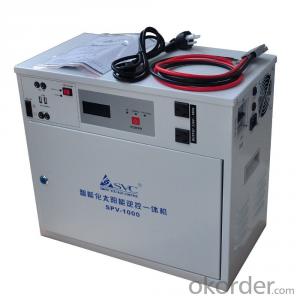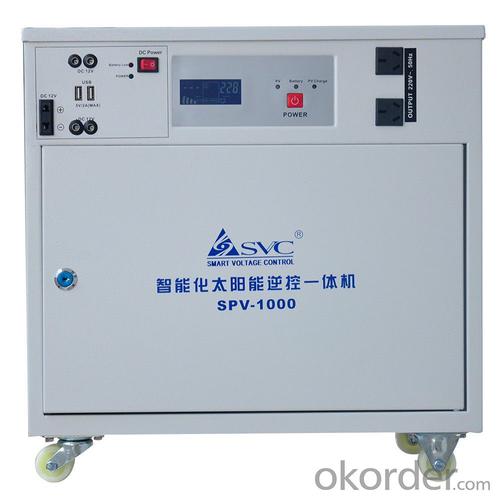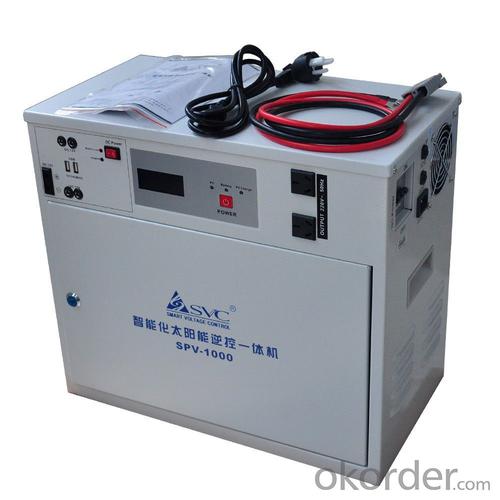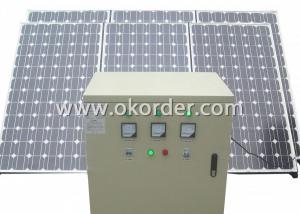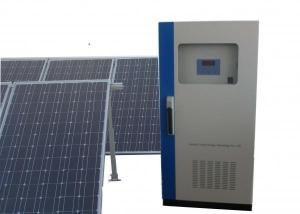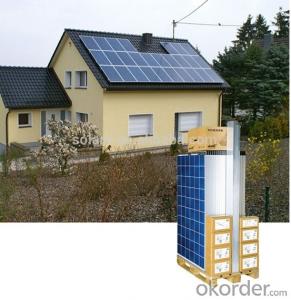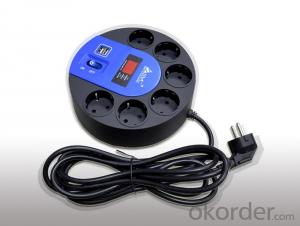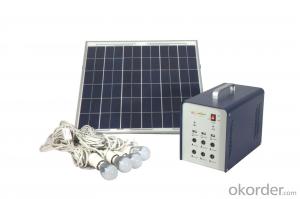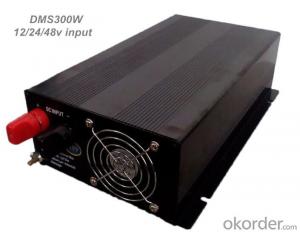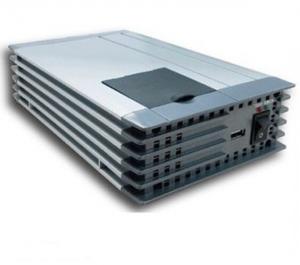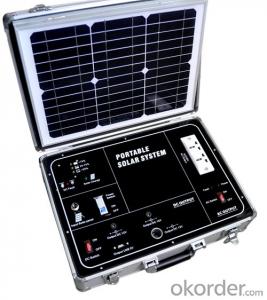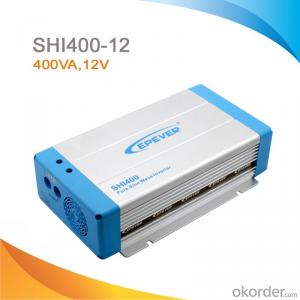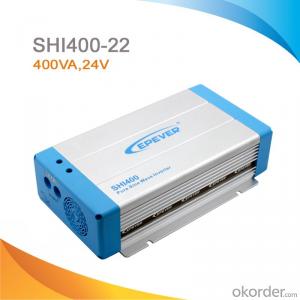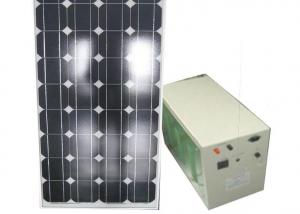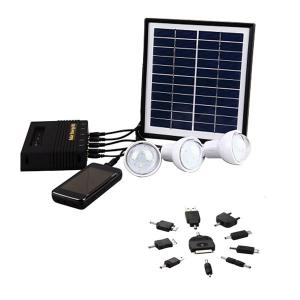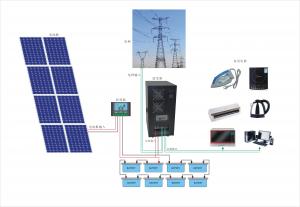Sun Solar Energy Systems - Pure Sine Wave LCD/LED AC/DC 360W Solar Power System
- Loading Port:
- China main port
- Payment Terms:
- TT OR LC
- Min Order Qty:
- 20 carton
- Supply Capability:
- 10000 carton/month
OKorder Service Pledge
OKorder Financial Service
You Might Also Like
ALL-IN-ONE 360W Pure Sine Wave AC/DC Output LCD/LED 12V/24V Solar Power System

| Model | SPV-600 | SPV-800 | SPV-1000 | SPV-1500 | |
| Rated power: | 360W | 480W | 600W | 1000W | |
| storage battery: | 12V(optional:24V) | ||||
| specifications of charging | |||||
| charging mode | PV charging and mains charging | ||||
| PWM solar controller: | voltage | 12V(optional:24V) | |||
| current | 30a(Max)(depends on the power of solar panels) | ||||
| PV maximm voltage | 12V system(potional:24V system) | ||||
| 25V | |||||
| hybrid charging | PV charging current:when I>15A,AC charging current is off | ||||
| PV charging current:when I>15A,AC charging current is 5A | |||||
| PV charging current:when I≤15A,AC charging current is 10A | |||||
| DC output system | |||||
| Charging port /USB | 5V/2A(Total)/ 2 units | ||||
| output port of DC | 12V/1.5A/ 3 units | ||||
| AC Mode | |||||
| Input voltage | 145-275VAC | ||||
| Input frequency | 48-54Hz(50HZ),Same s AC | ||||
| Output voltage | 200-240VAC | ||||
| Short Circuit | Breaker | ||||
| Inverter Mode | |||||
| Output voltage | 220VAC±5% | ||||
| Output frequency | 50±1% Hz(Auto detection) | ||||
| Output P.F | ≥0.6 | ||||
| Output wave form | Pure Sine Wave | ||||
| Transfer time | Typical 2-6ms,10ms max | ||||
| Overload capability | 110% Shut down within 60sec. | ||||
| 120% Shut down within 5sec. | |||||
| Short Circuit | ≥20ms System shut down automatically | ||||
| priority principle of mains and inversion | intelligent and automatic recongnition | ||||
| protection | protectings of output overload,output short circuit,inpot over voltage,input under voltage and over-temperature | ||||
| specifications of the overall unit | |||||
| dimension(mm) | 455*250*400 | ||||
| Net weight(KG) | 11 | 12 | 14 | 16 | |
| Gross weight(KG) | 12.5 | 13.5 | 16 | 18.5 | |
| display | display mode | LCD+LED | |||
| display information | LCD:working and protection status of inerter,charging status of storage battery | ||||
| LED:indications of working status and PV charging | |||||
| ENVIRONMENT | |||||
| ENVIRONMENT | indoor,or outdoor with waterproof measures | ||||
| Environment of performance: | Temperature 0℃~40℃,Humidity 20%~90%,non condensing | ||||
| Noise Level | Less than 40dB(lm) | ||||
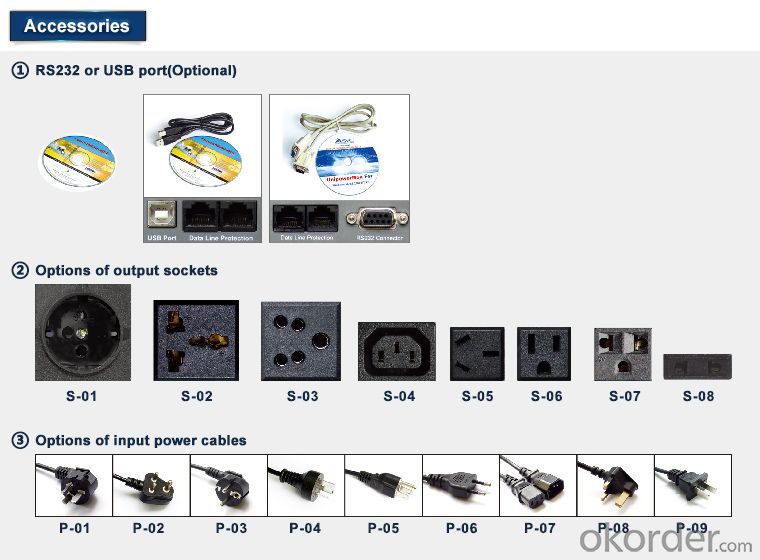

1. Wide range of input voltage
The UPS can offer normal and stable service voltage under its input voltage range. When the input voltage is out of its range the machine will switch to battery mode automatically to keep the output power in order to protect the equipment, such as computers, ensure they will not be damaged by the over high or over low voltage, users can continue the operation of equipment for a while or save the data on computers while the power network is abnormal.
2. Wide range of AVR(Automatic voltage regulation)
In the product’s input voltage range and under 3 steps of intelligent AVR function, it can provide a stable output voltage.
3. Automatic self detection when UPS on(LED).
Before the UPS on, red, yellow, blue LED will light up two times by cycle turns, after self detection UPS switch to AC mode/battery mode or working mode.
4. Silence function
In the "battery mode", shortly press the switch to turn off the buzzer. But the battery is about to run out or the load is too heavy, the buzzer sound cannot be muted.
5. Overload protection
In the battery mode, output voltage turn down correspondingly when it is overload, after the capacity of load is lower than the rated power then output voltage will back to rated value, it ensures the UPS will not shut down by abrupt overload which caused by surging current during the computer is working and other equipment is added.
6. Short circuit protection
When the mis-operation caused the load short circuit or computer failure (such as power tube breakdown of switch) cause short circuit, the UPS will shutdown automatically for protection.
7. The low current switch
This UPS adopts low current switch to extend the service life which is longer than conventional battery and high current switch in AC current path.
8. Automatic charging
There are two charging mode, charging time is faster than ordinary charging mode, higher efficiency, and greatly prolonging the service life of the battery.
9. With a bypass output
Independent bypass output socket for external printers or scanners of computer peripherals, with surge protection of the load.
- Q: Can solar panels be used to charge mobile devices?
- Yes, solar panels can be used to charge mobile devices.
- Q: What is the impact of dust storms on solar panel efficiency?
- Dust storms have a negative impact on solar panel efficiency. The dust particles that settle on the surface of solar panels reduce the amount of sunlight that can be absorbed and converted into electricity. This leads to a decrease in the overall energy output of the panels. Additionally, the dust can block the flow of air around the panels, causing them to overheat and further reduce their efficiency. Regular cleaning and maintenance of solar panels are necessary to mitigate the effects of dust storms and ensure optimal performance.
- Q: How do solar energy systems impact social equity?
- Solar energy systems can have a positive impact on social equity by providing access to clean and affordable energy for all. By reducing reliance on fossil fuels, solar energy helps to mitigate climate change, which disproportionately affects marginalized communities. Additionally, solar power can create job opportunities and stimulate local economies, promoting social and economic development.
- Q: Can solar energy systems be used for powering shopping malls?
- Yes, solar energy systems can definitely be used for powering shopping malls. Solar panels can be installed on the rooftops or parking lots of shopping malls to harness the energy from the sun. This energy can then be converted into electricity, which can power various operations within the mall, including lighting, heating and cooling systems, escalators, elevators, and other electrical appliances. By utilizing solar energy, shopping malls can significantly reduce their dependence on traditional energy sources and lower their carbon footprint. Additionally, solar energy systems can help malls save on electricity costs in the long run, as they generate clean and renewable energy. Overall, solar energy systems are a viable and sustainable option for powering shopping malls.
- Q: What is a solar inverter and what does it do?
- A solar inverter is an essential component of a solar power system that converts the direct current (DC) electricity produced by solar panels into alternating current (AC) electricity, which is used to power our homes and businesses. It is responsible for optimizing the energy output from solar panels and synchronizing it with the electrical grid.
- Q: How does the age of a solar energy system affect its performance?
- The age of a solar energy system can significantly affect its performance. Over time, solar panels can experience a decrease in efficiency due to various factors. One of the main factors is the degradation of the photovoltaic cells themselves. The cells can deteriorate over time due to exposure to sunlight, extreme temperatures, and other environmental factors. This degradation can result in a decrease in the system's overall power output. Additionally, the components of the solar system, such as inverters and wiring, may also experience wear and tear over time. Inverters are responsible for converting the direct current (DC) generated by the solar panels into usable alternating current (AC) electricity. As they age, inverters can become less efficient or even fail, which can affect the system's performance. Another aspect affected by the age of a solar energy system is the technology itself. Solar technology is constantly evolving, and newer systems tend to be more efficient and produce higher power outputs compared to older systems. Therefore, older solar energy systems may not be able to match the performance of newer, more advanced systems. Regular maintenance and inspections can help mitigate some of the performance issues related to the age of a solar energy system. Cleaning the panels to remove dirt and debris, checking for any loose connections, and ensuring that the system is properly aligned can all contribute to maintaining optimal performance. In conclusion, the age of a solar energy system can impact its performance due to the degradation of photovoltaic cells, wear and tear on components like inverters, and the advancements in solar technology. Regular maintenance and staying up to date with the latest advancements can help prolong the lifespan and optimize the performance of a solar energy system.
- Q: Can solar energy systems be used for powering water pumps?
- Yes, solar energy systems can be used to power water pumps. Solar-powered water pumps, also known as solar water pumping systems, use the energy from the sun to operate water pumps, providing a sustainable and renewable source of power for pumping water. These systems are particularly beneficial in remote or off-grid areas where access to electricity is limited or unavailable.
- Q: Can solar energy systems be used for powering recycling or waste management facilities?
- Certainly, recycling or waste management facilities can utilize solar energy systems for power. The facilities can install solar panels on their rooftops or open spaces to capture sunlight and convert it into electricity. This renewable energy can then be used to operate various equipment within the facility, such as sorting machines, conveyor belts, compactors, shredders, and more. The utilization of solar energy in recycling or waste management facilities offers several benefits. Firstly, it reduces reliance on conventional energy sources like fossil fuels, which are not only costly but also contribute to environmental pollution and climate change. Solar energy, in contrast, is abundant, free, and sustainable in the long run. Additionally, solar energy systems have minimal maintenance requirements due to the absence of moving parts in solar panels and their ability to withstand harsh weather conditions. As a result, they are highly reliable and suitable for continuous operations in recycling or waste management facilities. Another advantage of using solar energy in these facilities is the ability to offset electricity costs associated with heavy machinery usage. Given the high energy demands of recycling and waste management processes, utilizing solar power can significantly reduce electricity bills and lead to long-term cost savings. Moreover, solar energy is environmentally friendly, emitting no greenhouse gases or air pollutants during operation. This aligns perfectly with the objectives of recycling and waste management facilities, which strive to minimize environmental impact and promote sustainable practices. By harnessing solar energy, these facilities can further decrease their carbon footprint and contribute to a greener, more sustainable future. In conclusion, solar energy systems can effectively power recycling or waste management facilities, offering numerous advantages such as reduced dependence on conventional energy sources, cost savings, low maintenance requirements, and environmental sustainability. With the continuous advancements and affordability of solar technology, it is expected that solar energy will play an even greater role in powering these facilities in the future.
- Q: Are there any limitations to using solar energy for powering vehicles?
- Yes, there are limitations to using solar energy for powering vehicles. Some of the main limitations include the intermittent nature of solar power, as it is dependent on weather conditions and daylight availability. This makes it challenging to consistently generate sufficient energy for continuous vehicle operation. Additionally, solar panels take up a significant amount of space, which can be impractical for smaller vehicles with limited surface area. Moreover, the energy conversion efficiency of solar panels is relatively low, resulting in less power output compared to conventional fuel sources. Lastly, the initial installation cost of solar panels and the associated infrastructure can be expensive, making it less economically viable for widespread adoption in the automotive industry.
- Q: How does the efficiency of solar panels vary across different installation angles?
- The efficiency of solar panels can vary across different installation angles due to several factors. The angle at which solar panels are installed determines the amount of sunlight they receive and how effectively they can convert it into electricity. Ideally, solar panels should be installed at an angle that allows them to capture the maximum amount of sunlight throughout the day. This angle is usually determined by the latitude of the installation site. For example, in locations closer to the equator, a lower tilt angle is preferred, while higher latitudes require a steeper tilt angle. If the installation angle is too low, the solar panels may not receive enough sunlight, especially during the winter months when the sun is lower in the sky. On the other hand, if the angle is too steep, sunlight may be reflected off the surface of the panels instead of being absorbed, resulting in a decrease in efficiency. Additionally, the efficiency of solar panels can also be influenced by the orientation of the installation angle. In the northern hemisphere, solar panels facing south tend to receive the most sunlight throughout the day. However, east or west-facing panels can also be effective, especially if there is a need to optimize energy production during specific times of the day. Furthermore, the efficiency of solar panels can be affected by shading. Obstructions such as trees, buildings, or other structures can cast shadows on the panels, reducing their overall efficiency. Therefore, it is essential to consider the potential shading impacts when determining the installation angle. In conclusion, the efficiency of solar panels varies across different installation angles primarily due to the amount of sunlight they receive and how effectively they can convert it into electricity. It is crucial to find the optimal installation angle and orientation to maximize energy production and overall efficiency.
Send your message to us
Sun Solar Energy Systems - Pure Sine Wave LCD/LED AC/DC 360W Solar Power System
- Loading Port:
- China main port
- Payment Terms:
- TT OR LC
- Min Order Qty:
- 20 carton
- Supply Capability:
- 10000 carton/month
OKorder Service Pledge
OKorder Financial Service
Similar products
Hot products
Hot Searches
Related keywords

